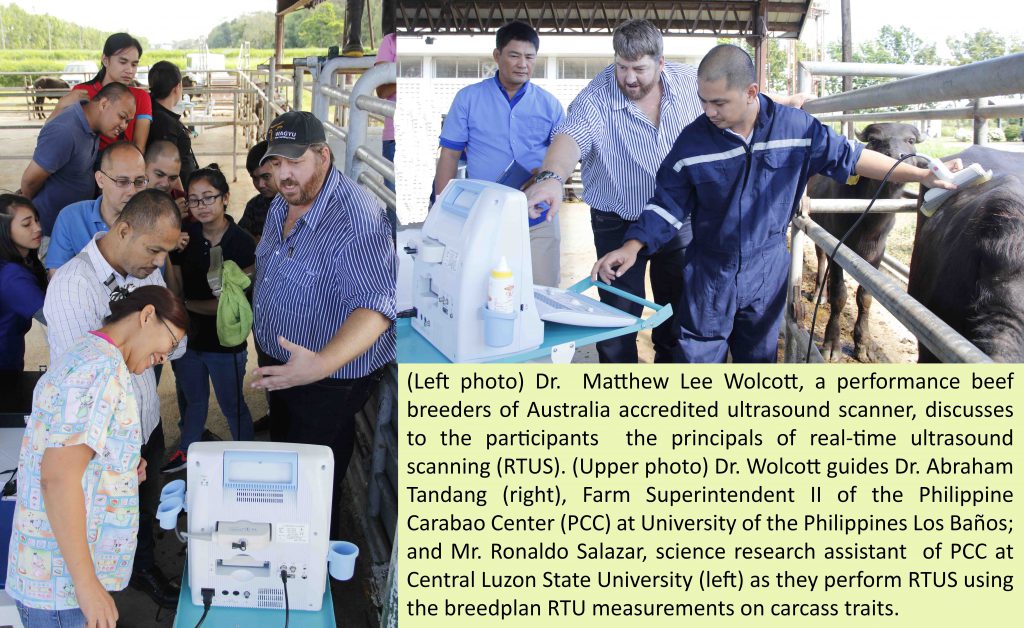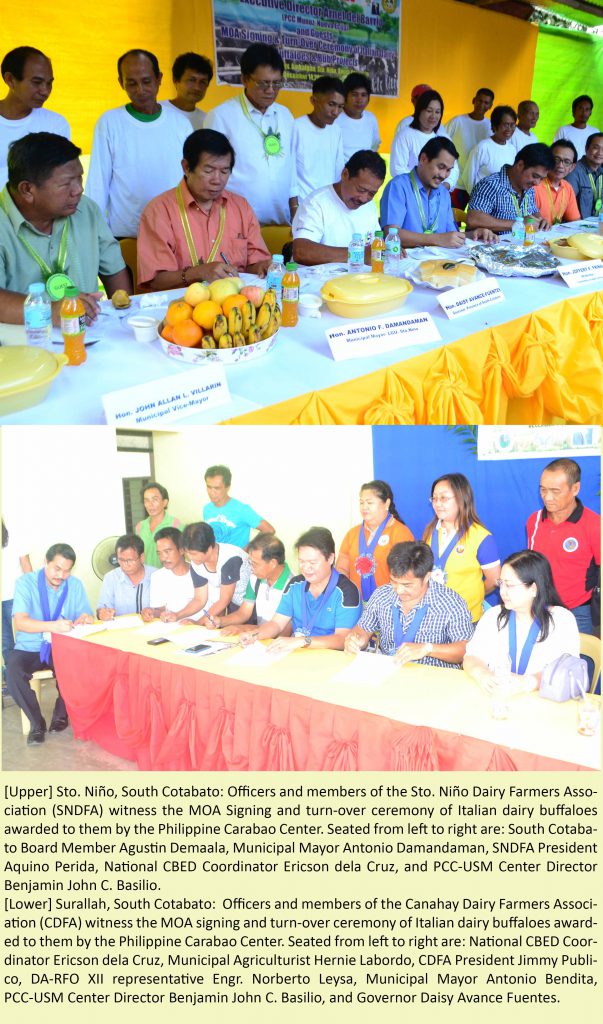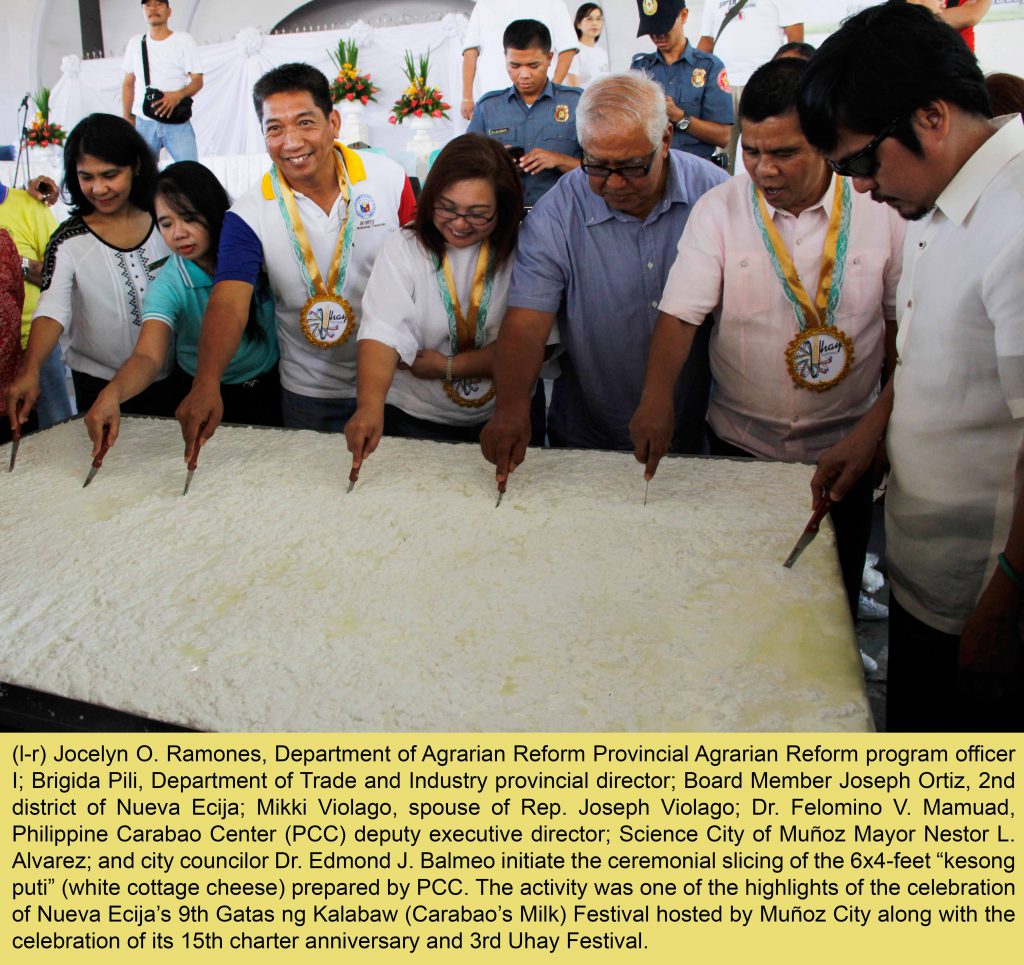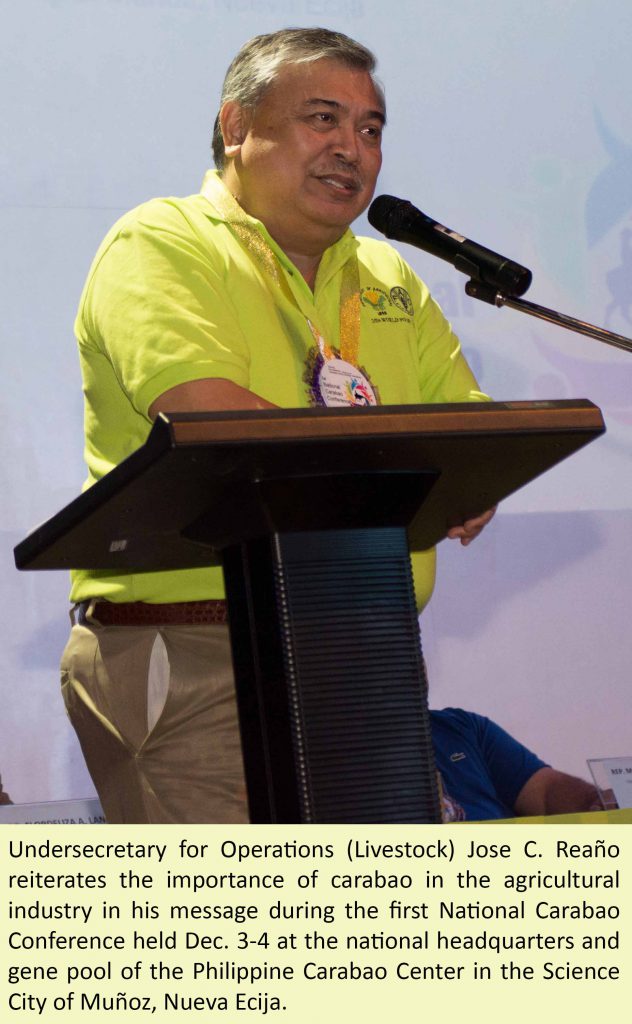Anyone who has already been at “Milka Krem”, the dairy products outlet of the Philippine Carabao Center (PCC) in the Science City of Munoz in Nueva Ecija, can ascertain that it has become a haven for an array of delightful, truly refreshing, and healthy products that it sells to the public.
It has products such as choco milk, fresh milk, yogurt, lacto juice, pastillas de leche, pulvoron, milkaroons and ice cream. They are made from delicious and nutritious carabaos milk supplied by the agency’s national gene pool and from the milk harvest of small-hold dairy farmers.
The dairy outlet was established to empower and support the dairy farmers in having a sure market for their milk produce. It carries the tagline “Fresh and Natural,” which is anchored on the agency’s science-based practices in developing products.
Aside from the products already mentioned, Milka Krem also offers four local cheeses that are classified as high-end.
They are Gouda cheese, Mozzarella, White cheese or the “kesong puti” and the Cream cheese.
These cheeses are worth anyone’s time in partaking them or taking them home for consumption.
Here’s how these cheeses are described and made:
Gouda cheese
According to Patrizia Camille Saturno, PCC’s Central Dairy Collection and Processing Facility (CDCF) plant manager, Gouda is a washed-curd and semi-hard kind of cheese with a creamy yellow paste made of whole ripened milk.
She said that Gouda cheese is a Dutch cheese named after a city in Netherlands. She added that it is used to be processed using cow’s milk in that country. But at PCC, she said, the Gouda cheese is produced using buffalo’s milk.
Gouda cheese, she further said, has a mild flavor and has good melting properties. She added that this type of cheese is slow to age compared to other ripened cheeses. Ripening, she explained, can be from 60 days to 6 months.
“Aged gouda is commonly used to enrich soups and sauces. It may be grated, sliced, cubed or melted and used as a table cheese or dessert cheese,” Saturno said.
She added that this cheese is available at a packing size of 100g net weight at Milka Krem at Php90 each.
She shared the how-to’s of making the gouda cheese as follows:
- Heat the milk to about 72 to 75°C for 15 seconds and cool it toabout 43 to 45 °C;
- Dissolve culture in small amount of milk completely and add it to the milk. Mix it for a few seconds afterwards;
- Leave the mixture for one hour;
- Dissolve rennet in small amount of water and add it to the milk. Mix it until incorporated;
- Milk with added rennet will be left undisturbed for one to one and half hours for coagulation;
- After one hour, cut the curd into squares and leave for five to ten minutes;
- Drain the coagulum by removing the whey (30% of the total milk);
- Add hot water (75°C, 20% of the total milk) to the curd;
- Remove 90% of the whey;
- Collect all the curds and press for 30 minutes under the whey;
- After pressing, mold the curds in wheels with 3kgs each;
- Press the curd wheels in a cheese presser for 30 mins each side;
- Place the pressed cheese (pH 5.4-5.5) in the ripening room (12-14°C, overnight);
- Submerge wheels into 20% brine solution at 12-14°C overnight;
- Age for 6 months in cheese ripening room; and
- Pack by 100g/1kg slice in a vacuum packed pouch
The procedures are applicable to any specific number of volumes of milk to be processed, she said.
Mozarella
Mozzarella, according to Saturno, is a type of cheese made from buffalo’s milk.
In the PCC’s CDCF, she said, three types of mozzarella cheeses are developed and sold. They are: (1) the soft-type fresh mozzarella, which has porcelain white color, lightly salted and smooth textured; (2) the pizza-type mozzarella cheese, which has low moisture content and distinguished by its unique melting and stretching characteristics; and (3) the Bocconcini, which literally means “little bites” in Italy.
Saturno said that the first type is a sweet, creamy and milky-like. It is packed with water and ideal to eat for salads and appetizers. The second, is ideal for making pizza and lasagna since it has unique melting and stretching characteristics and the third, is semi-soft, white, egg-sized, rind less, and unripened cheeses specifically used for salads and appetizers.
Saturno said that all of these mozzarella cheeses are in 125 grams net weight and are priced at Php135.
The procedures in making mozzarella are as follows:
- Heat the milk to about 72-75°C for 15 seconds and cool it to about less than 10°;
- Acidify the milk by adding citric acid solution to pH 5.2-5.3;
- Heat the milk to 35 to 38°C;
- Dissolve rennet in 100mL water for 30 to 45 minutes for coagulation;
- Cut the curd into big cubes (about 1 to 2 square inches) and let it stand for 5 to 10 minutes;
- Drain the whey for about 1 to 2 hours;
- Transfer the curds into stainless steel tray and slice it thinly;
- Sprinkle salt over curd and mix it well (2.5% salt based on weight of curd);
- Stretch the curd with hot water (85-90°C. 1.5 parts hot water per 1 part curd) until the curd is smooth and shiny;
- Mold the stretched curd into balls (approx 125g per ball – Mozzarella Cheese) and (approx 10g per ball – Bocconcini); and
- Submerge the mozzarella balls into a cold water
Saturno added that this procedure is applicable to any specific number or volumes of milk to be processed as mozzarella cheese.
White Cheese
The “white cheese”, meanwhile, is an authentic Philippine cheese that literally means “kesong puti”in Tagalog.
“It is a delicious soft, unripened cheese made from pure buffaloes’ milk, ” Saturno said.
According to her, white cheese is similar to the cottage cheese queso blanco and paneer as it it has almost the same texture and slightly salty taste.
Traditionally, according to Saturno, vinegar is used to coagulate the milk in order to produce kesong puti. The use of vinegar, she said, makes the product slightly sour in taste.
But at PCC, Saturno explained, rennet is used as replacement for vinegar to eliminate the sour taste.
This cheese, according to her, originated from Bulacan, Cebu, Laguna and Samar.
“Filipinos are accustomed to eating kesong puti with pan de sal or toast bread,” she added.
At Milka Krem, this product which is at 200 grams net weight, is sold at Php70 per piece.
It is processed through the following procedures:
- Add salt to 14 kg milk;
- Heat the milk to 72 to 75°C for 15seconds then bring down the temperature to about 40 to 45°C;
- Dissolve rennet in small amount of water and add it to the milk. Let it stand for one to one and a half hours;
- After coagulation, cut the curd into squares. Let it sit for 5 to 10 minutes;
- Drain the whey for about one and a half to two hours; and
- Slice the curd into 200 grams per pack
Cream Cheese
The cream cheese, Saturno explained, is a soft unripened cheese prepared from buffalo’s milk with the use of aromatic cheese culture. It has a sweet and mild taste with a slight tang.
According to Mina P. Abella, officer-in-charge of the PCC at CLSU’s dairy outlet, cream cheese may be flavored with herbs using either basil or garlic to have additional taste.
The product can also be enjoyed as dip for chips or spreads on biscuits, bagels and toasted bread.
The packaging size for this kind of cheese, according to Honeylyn Palileo, marketing officer of Milka Krem,dairy outlet, is also at 100 grams net weight and is sold at Php60 each.
Saturno shared the process of making cream cheese, which was developed by the PCC at CLSU dairy outlet:
- Heat the cream to about 80 to 85 oC for 3 minutes and cool it to about 26 to 30 oC;
- Dissolve the culture in the small amount of milk and add it to the milk. Mix for a few seconds after a while;
- Leave the product overnight at room temperature;
- Mix it to break curds using a wire whisk. Place it in a strainer, refrigerate and let it drain for about 3 to 5 hours;
- Weigh curd and add small amount of salt and combine it well; and
- Pack the cream cheese in sanitized container
“This procedure is applicable to any specific number or volumes of milk to be processed as a cream cheese,” Saturno said.
These four local cheeses, the Milka Krem officer attested, are must-try cheese because of their respective exceptional good taste. They make snack time more rewarding due to their high-end quality taste and healthy and delectable properties.
The Milka Krem, located along the Maharlika Highway adjacent to the PCC main headquarters is open from 8am to 9pm. Orders can be placed through the contact details below and for Metro Manila residents, the products can be picked-up at PCC’s liaison office in the 5th floor of the DCIEC Building, National Irrigation Administration (NIA) in Quezon City during Saturdays.
STORE CONTACT AND ADDRESS:
Honey Lyn Palileo Marketing Officer Email Address: honeylynpalileo@gmail.com Mobile Number: +639752104273 Telephone Number: (044) 940 7826 Location: Science City of Muñoz, Nueva Ecija
Patrizia Camille O. Saturno Dairy Plant Manager Email Address: triziasaturno@yahoo.com Mobile Number: 09179235945 Telephone Number: (044) 940 7826 Location: Science City of Muñoz, Nueva Ecija










